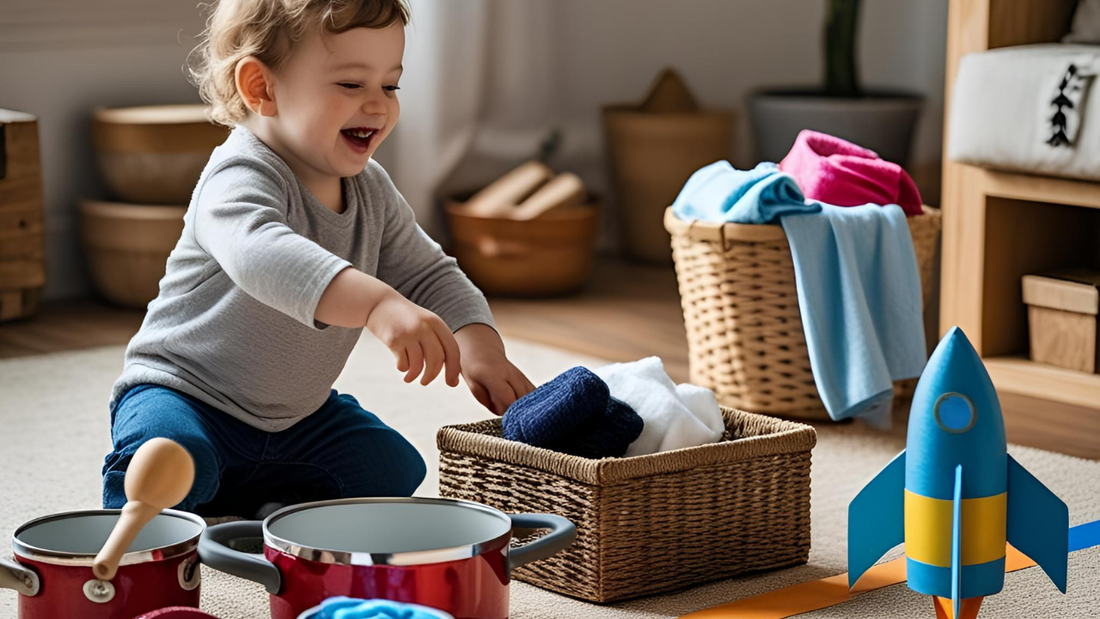
10 Creative Play Ideas Using Items You Already Have at Home
LiLLBUDLet's face it: parenting a little one is about wrangling itsy-bitsy socks, snacks that never end, and the occasional (read: daily) toy storm in your living room. But here's some terrific truth, you just need simple, everyday materials at home to spark to stimulate your child's brain development.
And actually, some of the most effective play experiences for brain growth are already in your hands: on your kitchen drawers, recycling bin, or laundry basket.
Whether you're searching for homemade toys for babies, easy toddler play at home, or innovative learning activities that align with significant baby milestones, this list of five has you covered.
1. Kitchen Orchestra: Bang, Shake, Repeat
Transform measuring cups, pots, and wooden spoons into a sensory music station. Let your baby bang, rattle, and explore new sounds-it's like baby jazz, only adorable.
What it develops: Sound discovery, hand-eye coordination, motor planning
2. Box Town Adventures
That empty Amazon box? It’s now become a rocket ship, race car, or reading fort. Let your toddler decorate it with stickers, crayons, or washi tape.
What it builds: Pretend play, creativity, gross motor play
3. Sock Toss Challenge
Fold up clean socks and use laundry baskets or empty boxes for a game of toss and target that a toddler can play at home. Label targets with colors or shapes for additional learning fun.
What it builds: Aim, coordination, spatial awareness
4. Sensory Pasta Bin
Cook pasta, toss with a dash of oil or food coloring, and let the baby dig in. Include scoops, cups, and safe textures for tactile discovery.
What it builds: Fine motor skills, sensory integration, curiosity
5. Spice Jar Sound Lab
Fill empty spice jars or containers with rice, lentils, or beads for an auditory sensory experience. Shake, compare, and listen.
What it builds: Cause and effect, auditory learning, grasping
6. Tissue Box Treasure Pull
Fill a clean tissue box with brightly colored pieces of cloth, socks, or ribbons. Allow your baby to pull and push toys in and out continuously.
What it builds: Finger strength, object permanence, coordination
7. Lid Sorting Station
Gather different shapes and sizes of plastic food container lids. Provide corresponding containers and allow your toddler to play match and try.
What it builds: Categorization, visual learning, problem-solving
8. Sink or Float Science
Fill a tub of water. Add safe items (sponge, spoon, toy car) and ask: "Will it sink or float?" Observe their brain light up with wonder.
What it builds: Early science thinking, prediction, sensory play
9. Painter’s Tape Roads
Apply tape on the floor, creating a road shape. Incorporate toy cars, blocks, or even wooden toys for pretend driving activities.
What it builds: Imagination, spatial awareness, creative thinking\
10. Laundry Basket Boat Ride
Pop your child (or their stuffed animals) into a laundry basket and pretend it’s a boat. Use scarves as water waves and spoons as paddles.
What it builds: Gross motor skills, pretend play, balance
Why These Simple Plays Matter
These homemade activities may feel small, but they’re big for your baby’s development. As your child explores textures, sounds, patterns, and movement, they’re hitting essential baby milestones like grasping, sorting, crawling, and problem-solving.
Even better? You’re giving them the most meaningful thing of all: connection. No batteries. No pressure. Just joy, play, and discovery—together.
Less Stuff, More Play
You don’t need Pinterest-worthy setups to raise a curious, creative child. Sometimes, the best early learning tools are a box, a spoon, and you.
Because play doesn’t need to be perfect. It just needs to be present.

